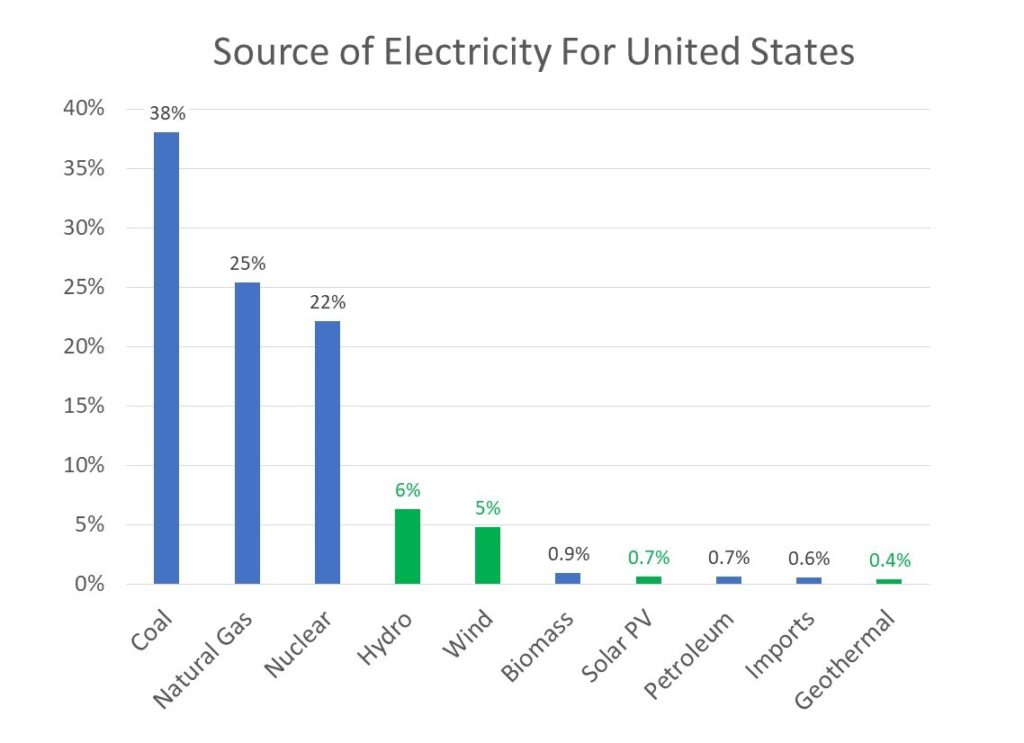Archive for the ‘Technology’ Category
What should we do next?
 Anonymous: What do you think we should do next?
Anonymous: What do you think we should do next?
Me: It depends. How did you get here?
Anonymous: Well, we’ve had great success improving on what we did last time.
Me: Well, then you’ll likely do that again.
Anonymous: Do you think we’ll be successful this time?
Me: It depends. If the performance/goodness has been flat over your last offerings, then no. When performance has been constant over the last several offerings it means your technology is mature and it’s time for a new one. Has performance been flat over the years?
Anon: Yes, but we’ve been successful with our tried-and-true recipe and the idea of creating a new technology is risky.
Me: All things have a half-life, including successful business models and long-in-the-tooth technologies, and your success has blinded you to the fact that yours are on life support. Developing a new technology isn’t risky. What’s risk is grasping tightly to a business model that’s out of gas.
Anon: That’s harsh.
Me: I prefer “truthful.”
Anon: So, we should start from scratch and create something altogether new?
Me: Heavens no. That would be a disaster. Figure out which elements are blocking new functionality and reinvent those. Hint: look for the system elements that haven’t changed in a dog’s age and that are shared by all your competitors.
Anon: So, I only have to reinvent several elements?
Me: Yes, but probably fewer than several. Probably just one.
Anon: What if we don’t do that?
Me: Over the next five years, you’ll be successful. And then in year six, the wheels will fall off.
Anon: Are you sure?
Me: No, they could fall off sooner.
Anon: How do you know it will go down like that?
Me: I’ve studied systems and technologies for more than three decades and I’ve made a lot of mistakes. Have you heard of The Voice of Technology?
Anon: No.
Me: Well, take a bite of this – The Voice of Technology. Kevin Kelly has talked about this stuff at great length. Have you read him?
Anon: No.
Me: Here’s a beauty from Kevin – What Technology Wants. How about S-curves?
Anon: Nope.
Me: Here’s a little primer – Beyond Dead Reckoning. How about Technology Forecasting?
Anon: Hmm. I don’t think so.
Me: Here’s something from Victor Fey, my teacher. He worked with Altshuller, the creator of TRIZ – Guided Technology Evolution. I’ve used this method to predict several industry-changing technologies.
Anon: Yikes! There’s a lot here. I’m overwhelmed.
Me: That’s good! Overwhelmed is a sign you realize there’s a lot you don’t know. You could be ready to become a student of the game.
Anon: But where do I start?
Me: I’d start Wardley Maps for situation analysis and LEANSTACK to figure out if customers will pay for your new offering.
Anon: With those two I’m good to go?
Me: Hell no!
Anon: What do you mean?
Me: There’s a whole body of work to learn about. Then you’ve got to build the organization, create the right mindset, select the right projects, train on the right tools, and run the projects.
Anon: That sounds like a lot of work.
Me: Well, you can always do what you did last time. END.
“he went that way matey” by jim.gifford is licensed under CC BY-SA 2.0
If you’re not creating derision, why bother?
 When you see good work, say so.
When you see good work, say so.
When you see exceptional work, say so in public.
When you’ve had good teachers, be thankful.
When you’ve had exceptional teachers, send them a text because texts are personal.
When you do great work and no one acknowledges it, take some time to feel the pain and get back to work.
When you do great work and no one acknowledges it, take more time to feel the pain and get back to work.
When you’ve done great work, tell your family.
When you’ve done exceptional work, tell them twice.
When you do the work no one is asking for, remember your time horizon is longer than theirs.
When you do the work that threatens the successful business model, despite the anguish it creates, keep going.
When they’re not telling you to stop, try harder.
When they’re telling you to stop it’s because your work threatens. Stomp on the accelerator.
When you can’t do a project because the ROI is insufficient, that’s fine.
When no one can calculate an ROI because no one can imagine a return, that’s better.
When you give a little ground on what worked, you can improve other dimensions of goodness.
When you outlaw what worked, you can create new market segments.
When everyone understands why you’re doing it, your work may lead to something good.
When no one understands why you’re doing it, your work may reinvent the industry.
When you do new work, don’t listen to the critics. Do it despite them.
When you do work that threatens, you will be misunderstood. That’s a sign you’re on to something.
When you want credit for the work, you can’t do amazing work.
When you don’t need credit for the work, it opens up design space where the amazing work lives.
When your work makes waves, that’s nice.
When your work creates a tsunami, that’s better.
When you’re willing to forget what got you here, you can create what could be.
When you’re willing to disrespect what got you here, you can create what couldn’t be.
When your work is ignored, at least you’re doing something different.
When you and your work are derided, you’re doing it right.
Image credit — Herry Lawford
What You Don’t Have
 If you have more features, I will beat you with fewer.
If you have more features, I will beat you with fewer.
If you have a broad product line, I will beat you with my singular product.
If your solution is big, mine will beat you with small.
If you sell across the globe, I will sell only in the most important market and beat you.
If you sell to many customers, I will provide a better service to your best customer and beat you.
If your new projects must generate $10 million per year, I will beat you with $1 million projects.
If you are slow, I will beat you with fast.
If you use short term thinking, I will beat you with long term thinking.
If you think in the long term, I will think in the short term and beat you.
If you sell a standardized product, I will beat you with customization.
If you are successful, I will beat you with my hunger.
If you try to do less, I will beat you with far less.
If you do what you did last time, I will beat you with novelty.
If you want to be big, I will be a small company and beat you.
I will beat you with what you don’t have.
Then, I will obsolete my best work with what I don’t have.
Your success creates inertia. Your competitors know what you’re good at and know you’ll do everything you can to maintain your trajectory. No changes, just more of what worked. And they will use your inertia. They will start small and sell to the lowest end of the market. Then they’ll grow that segment and go up-scale. You will think they are silly and dismiss them. And then they will take your best customers and beat you.
If you want to know how your competitors will beat you, think of your strength as a weakness. Here’s a thought experiment to explain. If your success is based on fast, turn speed into weakness and constrain out the speed. Declare that your new product must be slow. Then, create a growth plan based on slow. That growth plan is how your competitors will beat you.
Your growth won’t come from what you have, it will come from what you don’t have.
It’s time to create your anti-product.
Wrong Questions to Ask When Doing Technology Development
 I know you’re trying to do something that has never been done before, but when will you be done? I don’t know. We’ll run the next experiment then decide what to do next. If it works, we’ll do more of that. And if it doesn’t, we’ll do less of that. That’s all we know right now.
I know you’re trying to do something that has never been done before, but when will you be done? I don’t know. We’ll run the next experiment then decide what to do next. If it works, we’ll do more of that. And if it doesn’t, we’ll do less of that. That’s all we know right now.
I know you’re trying to create something that is new to our industry, but how many will we sell? I don’t know. Initial interviews with customers made it clear that this is an important customer problem. So, we’re trying to figure out if the technology can provide a viable solution. That’s all we know right now.
No one is asking for that obscure technology. Why are you wasting time working on that? Well, the voice of the technology and the S-curve analyses suggest the technology wants to move in this direction, so we’re investing this solution space. It might work and it might not. That’s all we know right now.
Why aren’t you using best practices? If it hasn’t been done before, there can be no best practice. We prefer to use good practice or emergent practice.
There doesn’t seem like there’s been much progress. Why aren’t you running more experiments? We don’t know which experiments to run, so we’re taking some time to think about what to do next.
Will it work? I don’t know.
That new technology may obsolete our most profitable product line. Shouldn’t you stop work on that? No. If we don’t obsolete our best work, someone else will. Wouldn’t it be better if we did the obsoleting?
How many more people do you need to accelerate the technology development work? None. Small teams are better.
Sure, it’s a cool technology, but how much will it cost? We haven’t earned the right to think about the cost. We’re still trying to make it work.
So, what’s your solution? We don’t know yet. We’re still trying to formulate the customer problem.
You said you’d be done two months ago. Why aren’t you done yet? I never said we’d be done two months ago. You asked me for a completion date and I could not tell you when we’d be done. You didn’t like that answer so I suggested that you choose your favorite date and put that into your spreadsheet. We were never going to hit that date, and we didn’t.
We’ve got a tight timeline. Why are you going home at 5:00? We’ve been working on this technology for the last two years. This is a marathon. We’re mentally exhausted. See you tomorrow.
If you don’t work harder, we’ll get someone else to do the technology development work. What do you think about that? You are confusing activity with progress. We are doing the right analyses and the right thinking and we’re working hard. But if you’d rather have someone else lead this work, so would I.
We need a patented solution. Will your solution be patentable? I don’t know because we don’t yet have a solution. And when we do have a solution, we still won’t know because it takes a year or three for the Patent Office to make that decision.
So, you’re telling me this might not work? Yes. That’s what I’m telling you.
So, you don’t know when you’ll be done with the technology work, you don’t know how much the technology will cost, you don’t know if it will be patentable, or who will buy it? That’s about right.
Image credit — Virtual EyeSee
The Power of Prototypes
 A prototype moves us from “That’s not possible.” to “Hey, watch this!”
A prototype moves us from “That’s not possible.” to “Hey, watch this!”
A prototype moves us from “We don’t do it that way.” to “Well, we do now.”
A prototype moves us from “That’s impossible.” to “As it turns out, it was only almost impossible.”
A prototype turns naysayers into enemies and profits.
A prototype moves us from an argument to a new product development project.
A prototype turns analysis-paralysis into progress.
A prototype turns a skeptical VP into a vicious advocate.
A prototype turns a pet project into top-line growth.
A prototype turns disbelievers into originators of the idea.
A prototype can turn a Digital Strategy into customer value.
A prototype can turn an uncomfortable Board of Directors meeting into a pizza party.
A prototype can save a CEO’s ass.
A prototype can be too early, but mostly they’re too late.
If the wheels fall off your first prototype, you’re doing it right.
If your prototype doesn’t dismantle the Status-Quo, you built the wrong prototype.
A good prototype violates your business model.
A prototype doesn’t care if you see it for what it is because it knows everyone else will.
A prototype turns “I don’t believe you.” into “You don’t have to.”
When you’re told “Don’t make that prototype.” you’re onto something.
A prototype eats not-invented-here for breakfast.
A prototype can overpower the staunchest critic, even the VP flavor.
A prototype moves us from “You don’t know what you’re talking about.” to “Oh, yes I do.”
If the wheels fall off your second prototype, keep going.
A prototype is objective evidence you’re trying to make a difference.
You can argue with a prototype, but you’ll lose.
If there’s a mismatch between the theory and the prototype, believe the prototype.
A prototype doesn’t have to do everything, but it must do one important thing for the first time.
A prototype must be real, but it doesn’t have to be really real.
If your prototype obsoletes your best product, congratulations.
A prototype turns political posturing into reluctant compliance and profits.
A prototype turns “What the hell are you talking about?” into “This.”
A good prototype bestows privilege on the prototyper.
A prototype can beat a CEO in an arm-wrestling match.
A prototype doesn’t care if you like it. It only cares about creating customer value.
If there’s an argument between a well-stated theory and a well-functioning prototype, it’s pretty clear which camp will refine their theory to line up with what they just saw with their own eyes.
A prototype knows it has every right to tell the critics to “Kiss my ass.” but it knows it doesn’t have to.
You can argue with a prototype, but shouldn’t.
A prototype changes thinking without asking for consent.
Image credit — Pedro Ribeiro Simões
How is your electricity made?
 How is your electricity made? Which source produces the most electricity? How much is made from zero-carbon sources? How much is made from renewable sources?
How is your electricity made? Which source produces the most electricity? How much is made from zero-carbon sources? How much is made from renewable sources?
In 2017, Otherlab was contracted by the Advanced Research Project Agency of the Department of Energy (ARPA-e) to review all available energy data sources and create an ultra-high resolution picture of the U.S. energy economy. The purpose was to identify research priorities and to model scenarios for new energy technologies and policies. This work leveraged many decades of effort by the U.S. Energy Information Agency (PDF) and Lawrence Livermore National Lab analyzing the U.S. energy economy and providing annual snapshots in a Sankey Flow Diagram format. The Otherlab “Super Sankey” tool is available at www.departmentof.energy
Here’s a link to Otherlab’s original post on the project.
The Sankey Flow diagram format can be difficult at first, so I created a simple chart to break down the electricity sources for the United States.
As you can see, we have a long way to go to replace coal and natural gas, the two most troublesome sources for the planet. Together, coal and gas are responsible for 63% of the country’s electricity. The next largest source is nuclear at 22%. Nuclear is a carbon-free source of electricity, but it’s not renewable and it produces waste that must be stored for a long time in secure vaults. Nuclear is often considered a good solution to produce carbon-free electricity (at least while renewable sources come online), but it’s a politically charged technology due to the perceived danger of catastrophic failure of nuclear powerplants.
The largest renewable source of electricity is hydro at 6% and wind is next at 5%. We hear a lot about solar, but it produces a small fraction of our electricity. And we don’t hear much about geothermal which is about half the size of solar.
These numbers may differ a bit from those calculated from other data sources, but the picture is clear. We’ve got a long way to go to displace coal and natural gas. But the cost of renewable sources is now less than coal and natural gas. You’ll soon see more coal plants closing and reduced sales of natural gas power turbine generators.
If we are to do one thing to accelerate the transition to renewable sources of electricity, we should end subsidies paid to coal and natural gas industries and use the freed-up money to create the next-generation technologies that help the grid accept more renewable sources of electricity.
Image credit – Andreas Øverland
Uncertainty Isn’t All Bad
 If you think you understand what your customers want, you don’t.
If you think you understand what your customers want, you don’t.
If you’re developing a new product for new customers, you know less.
If you’re developing a new technology for a new product for new customers, you know even less.
If you think you know how much growth a new product will deliver, you don’t.
If that new product will serve new customers, you know less.
If that new product will require a new technology, you know even less.
If you have to choose between project A and B, you’ll choose the one that’s most like what you did last time.
If project A will change the game and B will grow sales by 5%, you’ll play the game you played last time.
If project A and B will serve new customers, you’ll change one of them to serve existing customers and do that one.
If you think you know how the market will respond to a new product, it won’t make much of a difference.
If you don’t know how the market will respond, you may be onto something.
If you don’t know which market the product will serve, there’s a chance to create a whole new one.
If you know how the market will respond, do something else.
When we have a choice between certainty and upside, the choice is certain.
When we choose certainty over upside, we forget that the up-starts will choose differently.
When we have a lot to lose, we chose certainty.
And once it’s lost, we start over and choose uncertainty.
Image credit — Alexandra E Rust
Now that you know your product is bad for the environment, what will you do?
 If your products were bad for the environment, what would you do?
If your products were bad for the environment, what would you do?
If your best products were the worst for the environment, what would you do?
If you knew your products hurt the people that use them, what would you do?
If you knew your sales would be reduced if you told your customers that your products were bad for their health, what would you do?
If you knew a competitive technology was fundamentally less harmful to the environment, what would you do?
If you knew that competitive technology did not hurt the people that use it, what would you do?
If you knew that competitive technology was taking market share from you, what would you do?
If you knew that competitive technology was improving faster than yours, what would you do?
If you knew how to redesign your product to make it better for the environment, but that redesign would reduce the product’s performance in other areas, what would you do?
If that same redesign effort generated patented technology, what would you do?
So, what will you do?
Image credit — Shane Gorski
What Good Ideas Feel Like
If you have a reasonably good idea, someone will steal it, make it their own and take credit. No worries, this is what happens with reasonably good ideas.
If you have a really good idea, you’ll have to explain it several times before anyone understands it. Then, once they understand, you’ll have to help them figure out how to realize value from the idea. And after several failed attempts at implementation, you’ll have to help them adjust their approach so they can implement successfully. Then, after the success, someone will make it their own and take credit. No worries, this is what happens with really good ideas.
When you have an idea so good that it threatens the Status Quo, you’ll get ridiculed. You’ll have to present the idea once every three months for two years. The negativity will decrease slowly, and at the end of two years the threatening idea will get downgraded to a really good idea. Then it will follow the wandering path to success described above. Don’t feel special. This is how it goes with ideas good enough to threaten.
And then there’s the rarified category that few know about. This is the idea that’s so orthogonal it scares even you. This idea takes a year or two of festering before you can scratch the outer shell of it. Then it takes another year before you can describe it to yourself. And then it takes another year before you can bring yourself to speak of it. And then it takes another six months before you share it outside your trust network. And where the very best ideas get ridiculed, with this type of idea people don’t talk about the idea at all, they just think you’ve gone off the deep end and become unhinged. This class of idea is so heretical it makes people uncomfortable just to be near you. Needless to say, this class of idea makes for a wild ride.
Good ideas make people uncomfortable. That’s just the way it is. But don’t let this get in the way. More than that, I urge you to see the push-back and discomfort as measures of the idea’s goodness.
If there’s no discomfort, ridicule or fear, the idea simply isn’t good enough.
Image credit – Mindaugas Danys
Innovation isn’t uncertain, it’s unknowable.
 Where’s the Marketing Brief? In product development, the Marketing team creates a document that defines who will buy the new product (the customer), what needs are satisfied by the new product and how the customer will use the new product. And Marketing team also uses their crystal ball to estimate the number of units the customers will buy, when they’ll buy it and how much they’ll pay. In theory, the Marketing Brief is finalized before the engineers start their work.
Where’s the Marketing Brief? In product development, the Marketing team creates a document that defines who will buy the new product (the customer), what needs are satisfied by the new product and how the customer will use the new product. And Marketing team also uses their crystal ball to estimate the number of units the customers will buy, when they’ll buy it and how much they’ll pay. In theory, the Marketing Brief is finalized before the engineers start their work.
With innovation, there can be no Marketing Brief because there are no customers, no product and no technology to underpin it. And the needs the innovation will satisfy are unknowable because customers have not asked for the them, nor can the customer understand the innovation if you showed it to them. And how the customers will use the? That’s unknowable because, again, there are no customers and no customer needs. And how many will you sell and the sales price? Again, unknowable.
Where’s the Specification? In product development, the Marketing Brief is translated into a Specification that defines what the product must do and how much it will cost. To define what the product must do, the Specification defines a set of test protocols and their measurable results. And the minimum performance is defined as a percentage improvement over the test results of the existing product.
With innovation, there can be no Specification because there are no customers, no product, no technology and no business model. In that way, there can be no known test protocols and the minimum performance criteria are unknowable.
Where’s the Schedule? In product development, the tasks are defined, their sequence is defined and their completion dates are defined. Because the work has been done before, the schedule is a lot like the last one. Everyone knows the drill because they’ve done it before.
With innovation, there can be no schedule. The first task can be defined, but the second cannot because the second depends on the outcome of the first. If the first experiment is successful, the second step builds on the first. But if the first experiment is unsuccessful, the second must start from scratch. And if the customer likes the first prototype, the next step is clear. But if they don’t, it’s back to the drawing board. And the experiments feed the customer learning and the customer learning shapes the experiments.
Innovation is different than product development. And success in product development may work against you in innovation. If you’re doing innovation and you find yourself trying to lock things down, you may be misapplying your product development expertise. If you’re doing innovation and you find yourself trying to write a specification, you may be misapplying your product development expertise. And if you are doing innovation and find yourself trying to nail down a completion date, you are definitely misapplying your product development expertise.
With innovation, people say the work is uncertain, but to me that’s not the right word. To me, the work is unknowable. The customer is unknowable because the work hasn’t been done before. The specification is unknowable because there is nothing for comparison. And the schedule in unknowable because, again, the work hasn’t been done before.
To set expectations appropriately, say the innovation work is unknowable. You’ll likely get into a heated discuss with those who want demand a Marketing Brief, Specification and Schedule, but you’ll make the point that with innovation, the rules of product development don’t apply.
Image credit — Fatih Tuluk
The Trust Network II
 I stand by my statement that trust is the most important element in business (see The Trust Network.)
I stand by my statement that trust is the most important element in business (see The Trust Network.)
The Trust Network are the group of people who get the work done. They don’t do the work to get promoted, they just do the work because they like doing the work. They don’t take others’ credit (they’re not striving,) they just do the work. And they help each other do the work because, well, it’s the right thing to do.
Sometimes, they use their judgement to protect the company from bad ideas. But to be clear, they don’t protect the Status Quo. They use their good judgement to decide if a new idea has merit, and if it doesn’t, they try to shape it. And if they can’t shape it, they block it. Their judgement is good because their mutual trust allows them to talk openly and honestly and listen to each other. And through the process, they come to a decision and act on it.
But there’s another side to the Trust Network. They also bring new ideas to the company.
Trying new things is scary, but the Trust Network makes it safe. When someone has a good idea, the Network positively reinforces the goodness of the idea and recommends a small experiment. And when one installment of positivity doesn’t carry the day, the Trust Network comes together to create the additional positivity need to grow the idea into an experiment.
To make it safe, the Trust Network knows to keep the experiment small. If the small experiment doesn’t go as planned, they know there will be no negative consequences. And if the experiment’s results do attract attention, they dismiss the negativity of failure and talk about the positivity of learning. And if there is no money to run the experiment, they scare it up. They don’t stop until the experiment is completed.
But the real power of the Trust Network shows its hand after the successful experiment. The toughest part of innovation is the “now what” part, where successful experiments go to die. Since no one thought through what must happen to convert the successful experiment to a successful product, the follow-on actions are undefined and unbudgeted and the validated idea dies. But the Trust Network knows all this, so they help the experimenter define the “then what” activities before the experiment is run. That way, the resources are ready and waiting when the experiment is a success. The follow-on activities happen as planned.
The Trust Network always reminds each other that doing new things is difficult and that it’s okay that the outcome of the experiment is unknown. In fact, they go further and tell each other that the outcome of the experiment is unknowable. Regardless of the outcome of the experiment, the Trust Network is there for each other.
To start a Trust Network, find someone you trust and trust them. Support their new ideas, support their experiments and support the follow-on actions. If they’re afraid, tell them to be afraid and run the experiment. If they don’t have the resources to run the experiment, find the resources for them. And if they’re afraid they won’t get credit for all the success, tell them to trust you.
And to grow your Trust Network, find someone else you trust and trust them. And, repeat.
Image credit — Rolf Dietrich Brecher


 Mike Shipulski
Mike Shipulski